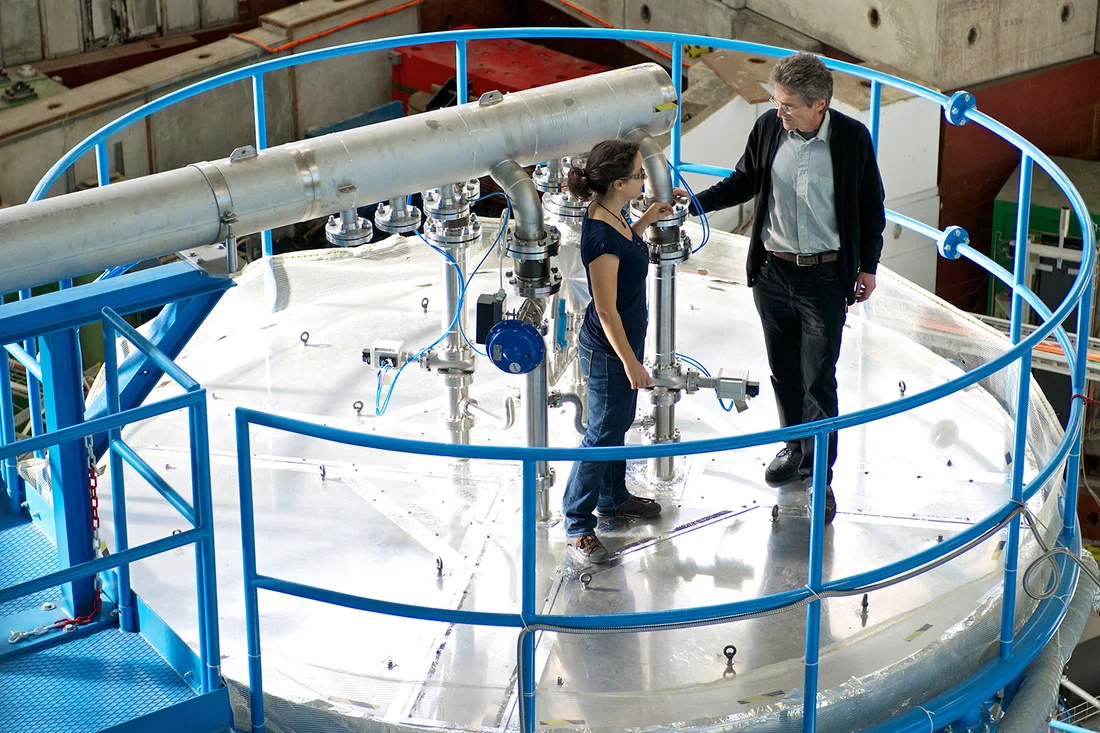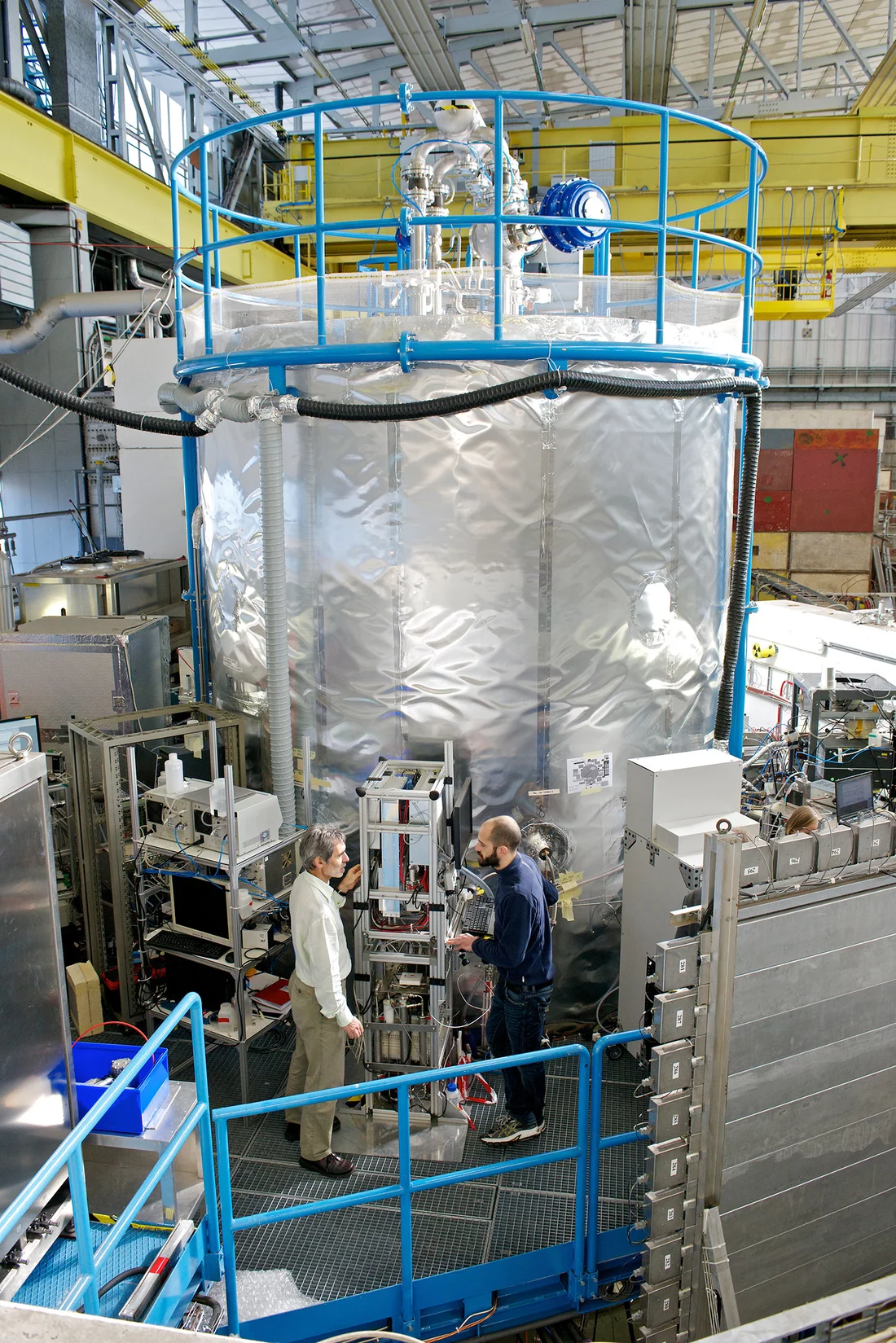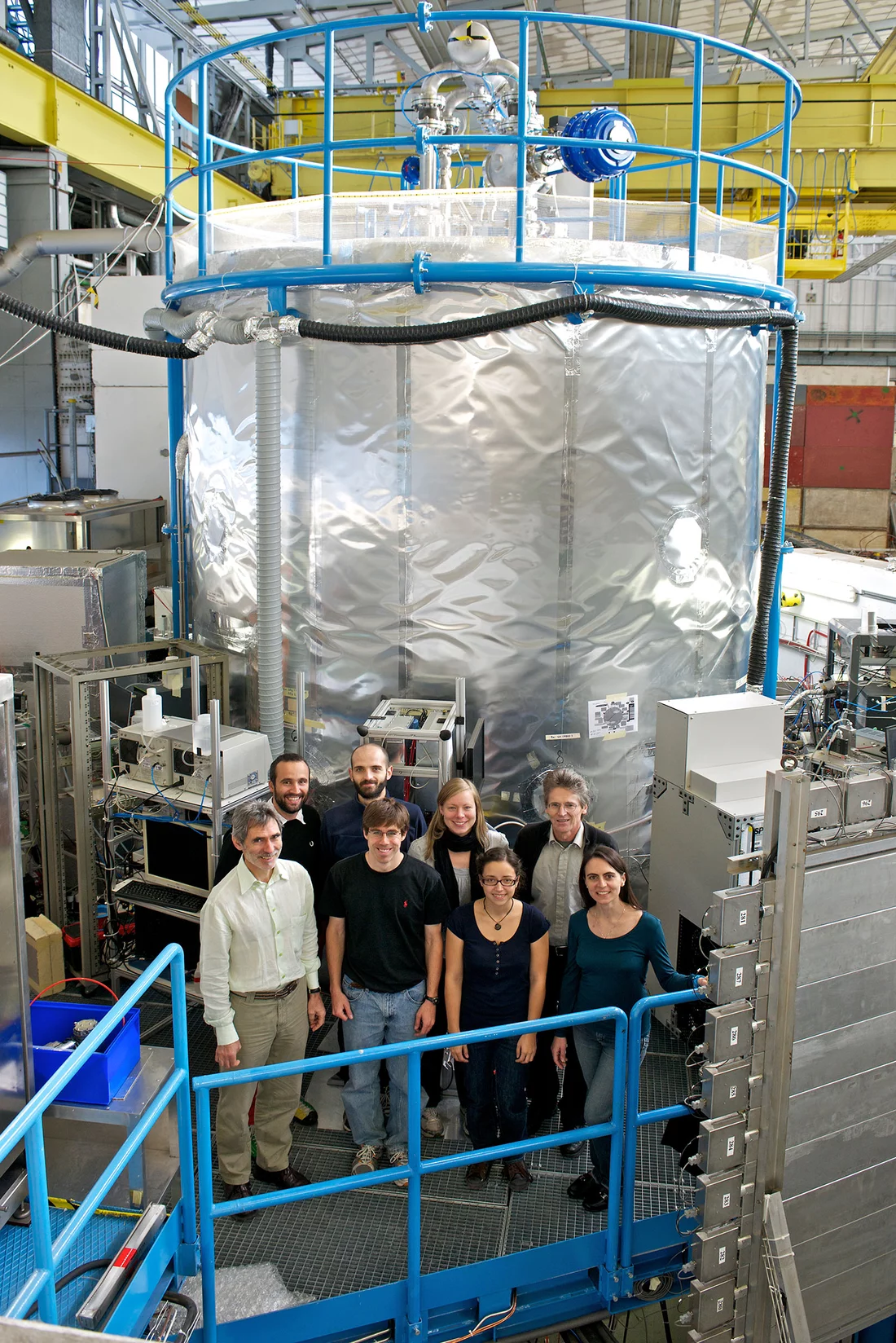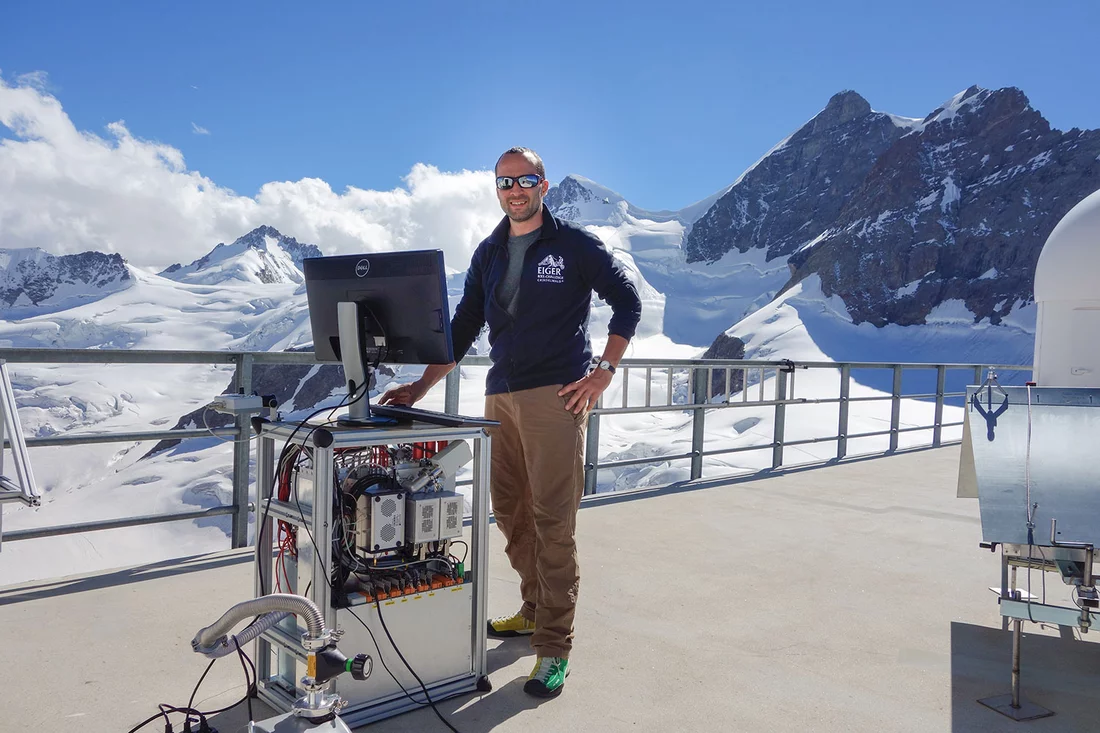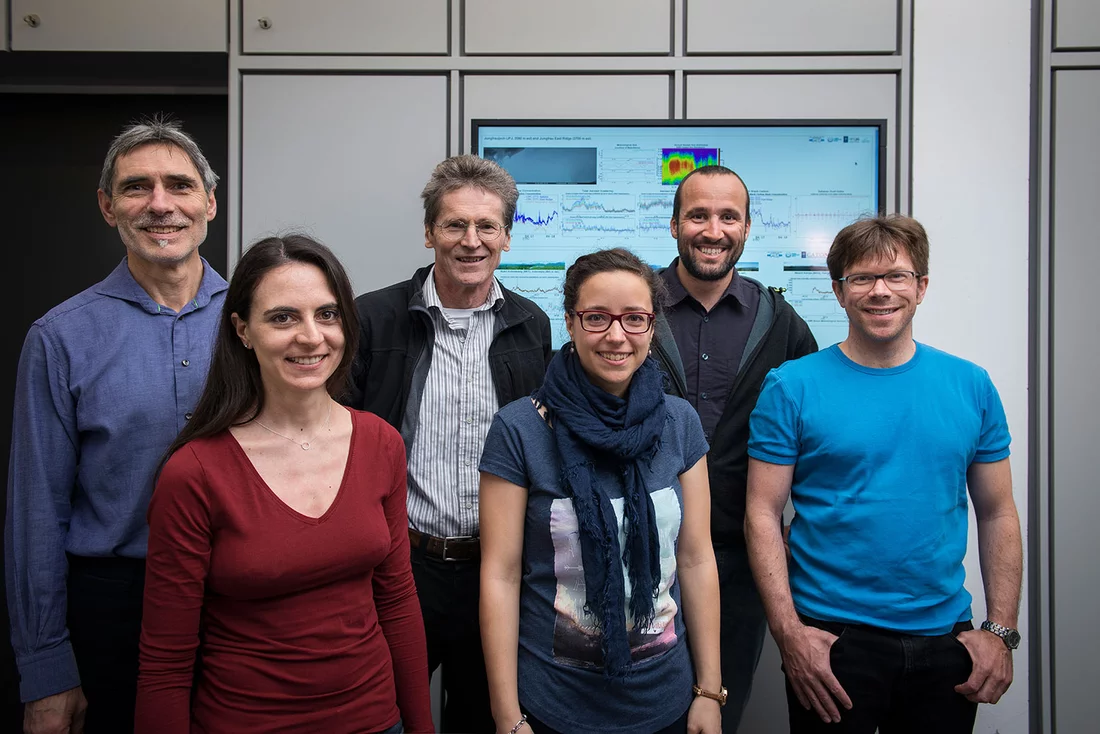Researchers have shown how fine particles are formed from natural substances in the atmosphere. These findings will improve our knowledge about clouds in the pre-industrial era and thus will contribute to a more accurate understanding of both the past and future evolution of our climate.
A prerequisite for understanding how climate has changed over the last centuries is the ability to reconstruct as reliably as possible pre-industrial climatic conditions. An important contribution has now been made by a comprehensive research collaboration with participants at CERN, the Paul Scherrer Institute PSI, and numerous other scientific institutions around the world. The researchers investigated the formation of aerosol particles in the atmosphere. Aerosol particles are important for climate because water droplets form on these particles, resulting in clouds. Aerosol particles are not only directly generated – for example, from soot produced by burning wood or by automobile traffic – but can also be formed in the atmosphere from gas phase precursors. It had been thought that the presence of sulfuric acid was necessary for this latter process, and that therefore this mechanism only became relevant with industrialisation. Now the researchers have shown that aerosol particles can be formed from precursor gases that are emitted by trees. Thus these natural substances have been generating the seeds of clouds from time immemorial. These findings are based on experiments in the CLOUD chamber at CERN, where a variety of atmospheric conditions can be very specifically replicated. In addition, parallel studies at the Jungfraujoch High Altitude Research Station in the Swiss Alps confirm that these processes do take place in this way in the real atmosphere. The results are presented through the coordinated publication of three articles in prominent scientific journals – two in Nature and one in Science.
To assess the effect of human activity on climate, scientists must be able to compare today's climate with that of the pre-industrial era. One important aspect of this effort is to reconstruct the abundance and properties of clouds. This matters because clouds can reflect sunlight and thus, to a certain extent, mask the warming of the Earth due to greenhouse gases. In turn, the formation of clouds is essentially determined by aerosol particles in the air on which water can condense to form cloud droplets. If more particles are available, more droplets can form, and that changes the characteristics of the clouds. Aerosol particles have a variety of sources – ranging for example from desert dust to soot particles produced by burning wood or fossil fuels. In addition, aerosol particles can be formed in the atmosphere through a process known as nucleation, when gas molecules join together. Up to now, it was thought that this process was crucially dependent on sulfuric acid, which has only been present in large quantities in the atmosphere since the beginning of the industrialisation.
Aerosols from nature
We have now been able to show that aerosol particles capable of seeding clouds can also arise from organic substances, such as those that are emitted by trees,
explains Urs Baltensperger – head of the Laboratory for Atmospheric Chemistry at the Paul Scherrer Institute PSI and co-initiator of the project – who this year was honoured with the Spiers Memorial Award of the Royal Society of Chemistry for his research on aerosols in the atmosphere. This means that even before the industrialisation aerosol particles were formed from gaseous precursors in the atmosphere – resulting in higher concentrations than had previously been assumed.
This does not necessarily mean that there were more clouds in those days than previously thought,
adds PSI researcher Jasmin Tröstl. But the clouds probably consisted of more and smaller droplets, so that they were brighter and reflected more sunlight back to space.
These results were obtained within the framework of an extensive international research collaboration under the leadership of researchers at CERN and the PSI. The researchers carried out their experiments in the CLOUD chamber at CERN and at the Jungfraujoch High Altitude Research Station in the Swiss Alps. The CLOUD chamber is a cylindrical vessel, 4.3 metres high and 3 metres in diameter, in which a variety of atmospheric conditions can be very specifically replicated. The researchers introduced the substance pinene, which is emitted by trees, and were able to observe how aerosol particles formed inside the CLOUD chamber.
Aerosol formation in two stages
We also characterised these processes with the help of mathematical models, through which we can understand how these particles are formed,
Tröstl explains. All in all, it is a very complicated process. First the pinene molecules are altered through reactions with oxidants such as ozone, and a multitude of similar but still different molecules – with varying degrees of 'stickiness' – are created.
The stickiest
, those that bind especially well with other molecules, can join together to form tiny particles. This is the first crucial step, because unless the particles reach a minimum size of around 1.7 nanometres, they simply evaporate again. With this, though, they are still too small to serve as the seeds of cloud droplets; for that, they need to be roughly 50 to 100 nanometres in size. In order for the particles to grow further, more molecules need to condense onto them– and this increasingly includes also the less
Tröstl says. sticky
ones which attach more easily to larger particles and are present in greater quantities,These results are the most important so far by the CLOUD experiment at CERN,
stresses CERN researcher Jasper Kirkby, spokesperson of the CLOUD experiment. When the nucleation and growth of pure biogenic aerosol particles is included in climate models, it should sharpen our understanding of the impact of human activities on clouds and climate.
The two steps in the formation of new aerosol particles are described in the pair of articles in Nature. CERN researcher Jasper Kirkby is first author of the first Nature article; PSI researcher Jasmin Tröstl is first author of the second.
Aerosols high in the mountains
Additionally, the researchers investigated aerosol particle formation under real atmospheric conditions at the Jungfraujoch High Altitude Research Station. Situated at more than 3500 meters above sea level, this station lies above the lowest layer of the atmosphere – the planetary boundary layer. Aerosol particles from the planetary boundary layer can also be found at this altitude, because they can be carried up with the rising air. Additionally, newly formed particles can be found here, whose origin was inexplicable – until now. Naturally, in contrast to the experiment at CERN, we could not limit ourselves to one individual substance as the precursor for the aerosol particles,
explains Federico Bianchi, who took part in this project during his time as a researcher at the PSI and now works at the University of Helsinki. In the process, we observed for the first time in a natural setting the formation of aerosol particles from sulfuric acid and ammonia. More importantly, we also were able to observe the formation of new aerosol particles from purely organic substances.
Thus the results of the CLOUD chamber and Jungfraujoch measurements agree in showing that aerosol particles are indeed formed from purely organic precursors.
Incidentally,
Bianchi adds, we could only observe aerosol formation on the Jungfraujoch at certain times, because the precursor molecules also come out of the lower atmospheric layers, and it appears that the conditions for this aerosol formation are only favourable within a time window of around two days following their ascent out of the planetary boundary layer.
Bianchi is first author of the paper in Science, which presents the results of the Jungfraujoch studies.
Synergies between laboratory and field
The researchers used the same instruments for the observations on the Jungfraujoch and for the measurements in the CLOUD chamber. The heart of the system is a mass spectrometer – a complex piece of equipment with which many thousands of different chemical substances can be distinguished from each other. The device used was manufactured by the Swiss company TOFWERK AG in Thun. This machine made it possible to determine the chemical composition in a matter of seconds,
Bianchi says.
The publications also show how important it is to link laboratory and field experiments. Measurements in the lab allow for detailed investigations of individual mechanisms, but only a field experiment can provide information about whether or not this process is relevant in the real atmosphere. And,
says Urs Baltensperger, the Jungfraujoch is one of the best sites worldwide to study this kind of process in the real free troposphere, thanks to its location, the clean air, and its infrastructure.
Text: Paul Scherrer Institute/Paul Piwnicki
About PSI
The Paul Scherrer Institute PSI develops, builds and operates large, complex research facilities and makes them available to the national and international research community. The institute's own key research priorities are in the fields of matter and materials, energy and environment and human health. PSI is committed to the training of future generations. Therefore about one quarter of our staff are post-docs, post-graduates or apprentices. Altogether PSI employs 2000 people, thus being the largest research institute in Switzerland. The annual budget amounts to approximately CHF 370 million. PSI is part of the ETH Domain, with the other members being the two Swiss Federal Institutes of Technology, ETH Zurich and EPFL Lausanne, as well as Eawag (Swiss Federal Institute of Aquatic Science and Technology), Empa (Swiss Federal Laboratories for Materials Science and Technology) and WSL (Swiss Federal Institute for Forest, Snow and Landscape Research).
(Last updated in May 2016)
Participating institutions and financial support
The experimental collaboration behind this research comprises 22 institutes: Aerodyne Research, California Institute of Technology, Carnegie Mellon University, CERN, Empa, Finnish Meteorological Institute, Goethe University Frankfurt, Helsinki Institute of Physics, Karlsruhe Institute of Technology, Lebedev Physical Institute, Leibniz Institute for Tropospheric Research, Paul Scherrer Institute, Tofwerk, University of Beira Interior, University of Eastern Finland, University of Helsinki, University of Innsbruck, University of Leeds, University of Lisbon, University of Manchester, University of Stockholm and University of Vienna.The Jungfraujoch High Altitude Research Station is operated by the International Foundation High Altitude Research Stations Jungfraujoch and Gornergrat (HFSJG).
This work received financial support from the Swiss National Science Foundation (SNSF), including infrastructure support for the CLOUD chamber at CERN as well as for the Jungfraujoch High Altitude Research Station; from MeteoSwiss in the framework of the Global Atmosphere Watch program; and from the European Commission projects ACTRIS and CLOUD-TRAIN.
Additional Information
Particle formation in the atmosphereClimate research at the particle accelerator (in German only)
News from the smog chamber: mechanisms of particle formation in the atmosphere unveiledt
Mystery solved: how fine particulates are formed in the air
Contact
Prof. Dr. Urs Baltensperger, Head of the Laboratory for Atmospheric Chemistry,Paul Scherrer Institute, 5232 Villigen PSI, Switzerland
Telephone: +41 56 310 24 08, e-mail: urs.baltensperger@psi.ch [German, English]
Dr. Jasmin Tröstl, Laboratory for Atmospheric Chemistry,
Paul Scherrer Institute, 5232 Villigen PSI, Switzerland
E-mail: jasmin.troestl@psi.ch [German, English]
Dr. Federico Bianchi, current address: Physics Dept., University of Helsinki, Finland
Telephone: +358 40 326 87 23, e-mail: federico.bianchi@psi.ch [Italian, English]
Prof. Dr. Jasper Kirkby, CERN, EP Department, 1211 Genf, Switzerland
Telephone: +41 22 767 45 93, e-mail: jasper.kirkby@cern.ch [English]
Original Publications
Ion-induced nucleation of pure biogenic particlesJasper Kirkby et al.; Nature 533, 521–526 (26. May 2016); doi:10.1038/nature17953
The role of low-volatility organic compounds in initial particle growth in the atmosphere
Jasmin Tröstl et al.; Nature 533, 527–531 (26. May 2016) doi:10.1038/nature18271
New particle formation in the free troposphere: a question of chemistry and timing
Federico Bianchi et al.; Science 352, 1109-1112 (27. May 2016); doi: 10.1126/science.aad5456

